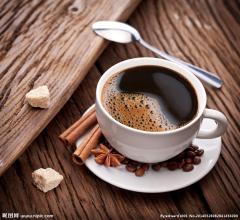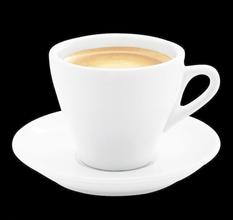Introduction to roasting and flushing of coffee beans
Roasting of coffee beans
The more common distinguishing methods are cinnamon baking (Cinnamon Roast), metropolitan baking (City Roast), metropolitan baking (Full-City Roast), Viennese baking (Vienna Roast), Italian baking (Italian Roast) and French baking (French Roast) raw beans, mastering the characteristics and construction of the roaster, and patiently repeating tests are the only way for a successful baker. The change of air and humidity in the working environment, the appropriate time for raw materials to enter the pot, the precise control of the heat program and time, how to adjust the exhaust gas valve, the cooling system and program, and even calculate the moving rate of each coffee bean in the boiler, all give coffee active vitality.
Coffee bean cup test
It is definitely a hard task, mainly to determine what kind of baking process or blending method is suitable for those beans in order to achieve the best results, in line with the appropriate time created by the environment and the physiological state of the testers. The ratio of coffee to boiling water, precise grinding, standard water temperature and the same soaking time, and then the testers did their best to find out the defects without talking to each other and recorded them quickly. the scene is guaranteed to dumbfounded some beginners, and there are a lot of tricks during the cup test. the reason is to use vacuum to absorb a mouthful of coffee straight to the root of the tongue and instantly feel the basic taste of sour / sweet / bitter / astringent. If it were not for professionals, it would not be easy to complete a certain number of accurate tests in a short time.
Proper grinding is related to the success or failure of a cup of coffee, no matter what brewing method has its correct extraction standard, which can also be called the decomposition mass of water molecules in coffee beans. The simple rule is that the shorter the brewing time is, the finer the grinding scale is. In addition, in the same operation mode, the amount of brewing weight, in order to achieve a balanced operation quality, it is also necessary to adjust the grinding scale properly.
Different grinding designs also lead to different grinding effects. According to the needs of its operation, the selection of appropriate grinding tooth disk (blade) and appropriate motor speed will greatly improve the taste of coffee. Choosing a suitable package or container and storing it in the right space is what it is all about, but fresh coffee is extremely sensitive to the preservation environment. In recent years, experts have strongly recommended the use of aluminum foil packaging material (opaque) with one-way exhaust valve, which has been praised and recognized by large domestic and foreign manufacturers, preventing the invasion of oxygen and being able to discharge carbon dioxide, greatly prolonging the honeymoon period of tasting fresh coffee. As for storage, I think it only needs to be placed in the shade where it is not susceptible to moisture and does not have direct sunlight. Refrigeration or freezing is not absolutely ideal. Excessive shrinkage of fiber, condensation of benign oil, peculiar smell in the refrigerator and temperature difference during extraction are all thought-provoking, isn't it? the brewing of coffee beans
The process of dissolving out the water-soluble components of ground coffee in any way can be called brewing or extraction, just like coffee beans, no kind of coffee is flawless, and the extraction of coffee is the same. no method is flawless.
In a cup of coffee, water accounts for more than 98%. Choosing the appropriate water quality is the first condition for brewing coffee, which contains moderate carbon dioxide and calcium. The purified water of magnesium is helpful to the extraction of good quality content to a certain extent, and the behavior of groundwater / tap water / mineral water / distilled water is arranged in order according to the taste of taste, but both groundwater and tap water need secondary purification to be ideal. as for mineral water and distilled water, some experts call it boring water, which has a certain negative effect on the balance of taste.
Proper grinding is also related to the success or failure of a cup of coffee. Due to the large contact surface between fine grinding and air, in addition to accelerating its oxidation, once combined with water, the speed of dialysis is several times faster than that of rough grinding. At this time, the adjustment of brewers in time and water temperature is related to the success or failure of a cup of coffee. No matter what kind of cooking method, using the simple formula, that is, the water temperature is directly proportional to the grinding thickness and inversely proportional to the heating time, the personal conditioning method in the process of washing and adjusting involves the impact of water molecules and fiber, and also fully affects the equilibrium of extraction. The moderate water temperature is about 90.5 ~ 96 degrees Celsius (except Espresso), and the suitable extraction rate is about 18% 22%. In other words, it is suitable for most cooking methods in the workshop. The benign ingredients are extracted completely and the inferior contents are retained in the fiber quality, that is, the perfect presentation of a cup of coffee.

Important Notice :
前街咖啡 FrontStreet Coffee has moved to new addredd:
FrontStreet Coffee Address: 315,Donghua East Road,GuangZhou
Tel:020 38364473
- Prev

Introduction of cultivation and species of Coffee Tree
Cultivation techniques require that the origin of coffee trees [4] is in Ethiopia in Africa. In botany, coffee trees belong to the evergreen trees of the subgenus Rubiaceae, and coffee beans, commonly known as coffee beans, are actually the seeds of the fruit of coffee trees. They are called coffee beans only because they are shaped like beans. Climate is the decisive factor for coffee cultivation, and coffee trees are only suitable for growing in the tropics or subheat.
- Next

Introduction to the taste and flavor of Kenyan coffee
Flavor Editor Kenyan Coffee Kenyan Coffee is aromatic, full-bodied, fruity, rich and perfect. Kenyan coffee has a wonderful fruit flavor, tastes like BlackBerry and grapefruit, and is a favorite of many coffee gluttons. This coffee has an excellent medium purity, crisp and refreshing taste. The flavor is fresh and most suitable for drinking iced coffee in summer.
Related
- Does Rose Summer choose Blue, Green or Red? Detailed explanation of Rose Summer Coffee plots and Classification in Panamanian Jade Manor
- What is the difference between the origin, producing area, processing plant, cooperative and manor of coffee beans?
- How fine does the espresso powder fit? how to grind the espresso?
- Sca coffee roasting degree color card coffee roasting degree 8 roasting color values what do you mean?
- The practice of lattes: how to make lattes at home
- Introduction to Indonesian Fine Coffee beans-- Java Coffee producing area of Indonesian Arabica Coffee
- How much will the flavor of light and medium roasted rose summer be expressed? What baking level is rose summer suitable for?
- Introduction to the characteristics of washing, sun-drying or wet-planing coffee commonly used in Mantenin, Indonesia
- Price characteristics of Arabica Coffee Bean Starbucks introduction to Manning Coffee Bean Taste producing area Variety Manor
- What is the authentic Yega flavor? What are the flavor characteristics of the really excellent Yejasuffi coffee beans?

